This Artist Uses Meat As His Medium
Dominic Episcopo’s red and raw images capture the spirit of Americana.
Let’s just say Dominic Episcopo has sunk his teeth into the “meat” of Americana. In his Kickstarter project, “Meat America,” the photographer has paired iconic images from Lincoln to Elvis (“Love Me Tender”) with hunks of red-meat art. He spent six years gathering what he describes as uniquely American images for the coffee table book-to-be “manifesto” that hits shelves later this month.
“I was absorbed in this world of meat. When I was at the supermarket or at a restaurant, I thought, ‘What else could that be besides a hot dog?’,” he says. “I go in with drawings into the supermarket—they know me there. Now they run into the back to grab extra steaks for me to look at.”
According to his Kickstarter page, the series “is a state of mind, an eye-opening and artery-closing tour of America’s spirit of entrepreneurship, rebellion and positivity.” A few more examples of things you’ll find in the book: A “Don’t Tred on Meat” flag, a map of the “United Steaks,” and the Liberty Bell.
Food art is no new concept (Arcimboldo comes to mind); whether it’s a fruit sculpture at some swanky gala or an Edible Arrangement sent to a loved one for their birthday, playing with food is a thing Americans like to do. But what makes meat uniquely American? According to a Food and Agricultural Organization report in 2009, Americans consume 279.1 pounds of meat per person each year. Australia is a close second with 259.3, but compare that to places like the United Kingdom (185 pounds/ person), Croatia (85.8 pounds/ person) or even Bangladesh (6.8 pounds/ person) and it’s clear: Americans like meat. And we like a lot of it, but what about a big ole’ steak connects the mind to cowboys rounding up cattle on the range? Episcopo says he’s not sure.
“I’m not quite as obsessed with meat as you might think,” Espiscopo says. “But I do think these images speak to a meat fetish thing that is uniquely American.”
He continues, citing his Kickstarter page: “This exhibition celebrates our collective American appetite of insurmountable odds, limitless aspiration, and immeasurable success. Though, some may just see it just as a bunch of states, presidents and American icons shaped out of animal products, which is also fine with me.”
Episcopo received his BFA in photography from the University of the Arts in Philadelphia and has lived and worked in the city for the last 25 years as a commercial photographer. Most of his “meat” series was produced in his studio inside of his home—a converted 150-year-old abandoned church—he shares with his wife and three-year-old son.
Inspiration for the series, he says, comes from his two favorite Manhattanite photographers, Weegee and Irving Penn.
“A sense of humor in photography is hard to pull off and still be taken seriously,” he says. “Weegee’s got that tongue-in-cheekness to it and Penn’s work influenced my straightforward rendering .”
To achieve that simple, untouched look for his meat photos he used cookie cutters and a keen eye for the right cut of steak. For the map of the “United Steaks,” he bought a ribeye, made one cut-in, bent one side to create Florida and the rest he shaped with his hands. The lines from the fat of the slab matter.
For the lettering in examples like “Love and Death” based on the famous Philadelphia statue by Robert Indiana, Episcopo uses deli cuts of ham, roast beef, salami and bologna. The settings and surrounding materials all have meaning and play a roll in telling the image’s story, he says. For “Love and Death” he included what he calls a Philadelphia breakfast: A pretzel, some coffee and the cover of the Daily News—all iconic images for the city.
“I can’t just use a cookie cutter to get a shape of Abe Lincoln,” he says. “I wanted it to look like the steak you bought at the supermarket.” Though Episcopo and his family eats only local, organic and grassfed beef, he says there’s a reason he can’t go organic with his images.
“Organic meat is purple,” he says. “I need a big, ruddy robust piece of meat to get the right idea across.”
He tries to maintain political neutrality with his work, but that doesn’t stop the letters from PETA advocates from coming in, he says. But flack for his flank art hasn’t stifled his creative energy around this endeavor.
“I love when I enter an art show and they ask me the medium,” Episcopo says. “How many people get to say meat or steak? Or ‘Meat is my Muse?’”
While we’re on the subject, a few other examples of “meat art” out there:
- Mark Ryden’s “The Meat Show: Paintings about Children, God and USDA Grade A Beef,” will have you gawking at paintings with Colonel Sanders, Abe Lincoln and a big, juicy steak on the same canvas.
- Though Russian artist Dimitri Tsykalov, may not be going for the “Americana” theme with his work, he’s certainly another meat artist worth checking out. Rather than shaping sausages into the state of Texas, his series “Meat Weapons,” evokes a more visceral response featuring full-suited soldiers outfitted in very rare meat-made machine guns and ammo.
- Marije Vogelzang’s “Faked Meat” goes for the meaty look using anything but: Sapicu-wings with dark chocolate, “meat” lollipops, and veggie-made meatballs. The gist: there are a lot of meat substitutes on grocery store shelves.
- A basic search for “meat art” on Pinterest will find you something red and raw to look at (real or not). A personal favorite: This meat-looking mask by artist Bertjan Pot.
- Lest we not forget America’s bacon obsession: This Foulard bacon scarf just may be the perfect Valentine’s Day present for the bacon-loving, love of your life.
/https://tf-cmsv2-smithsonianmag-media.s3.amazonaws.com/accounts/headshot/561436_10152738164035607_251004960_n.jpg)
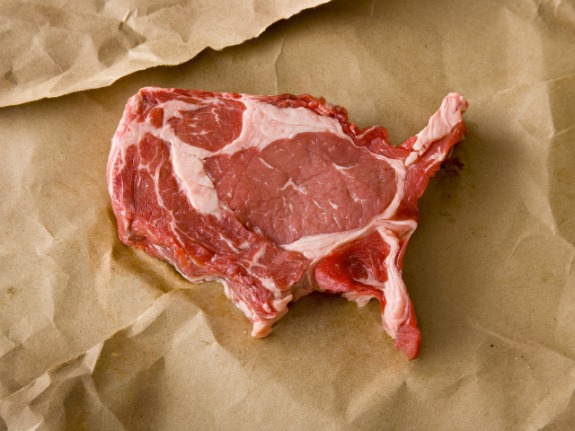
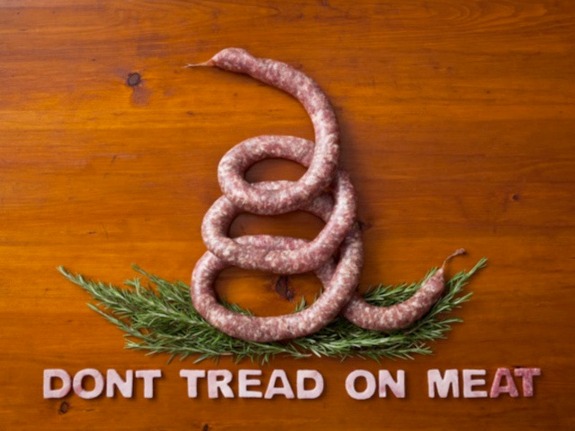
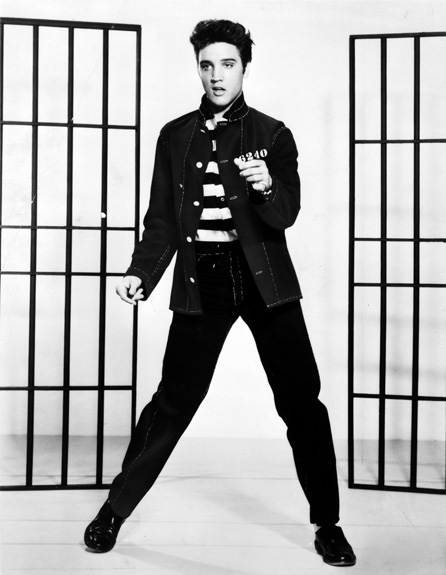
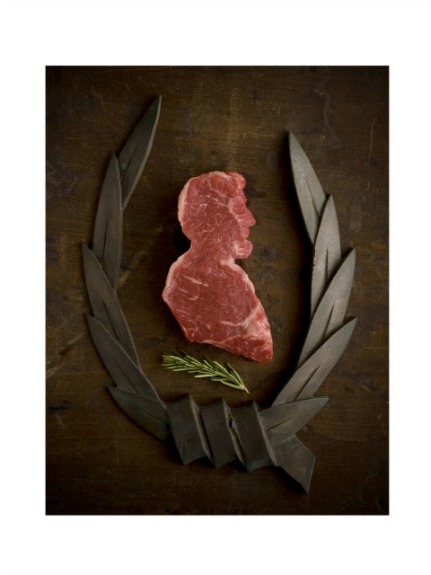
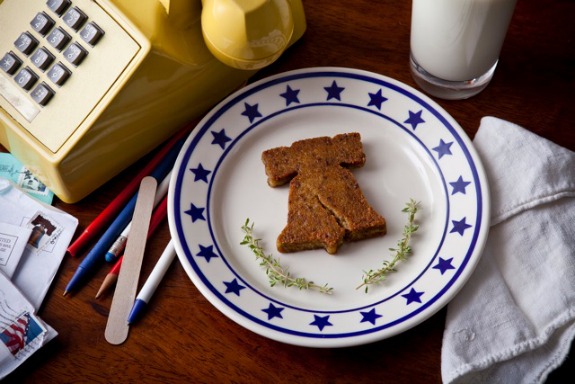
/https://tf-cmsv2-smithsonianmag-media.s3.amazonaws.com/accounts/headshot/561436_10152738164035607_251004960_n.jpg)